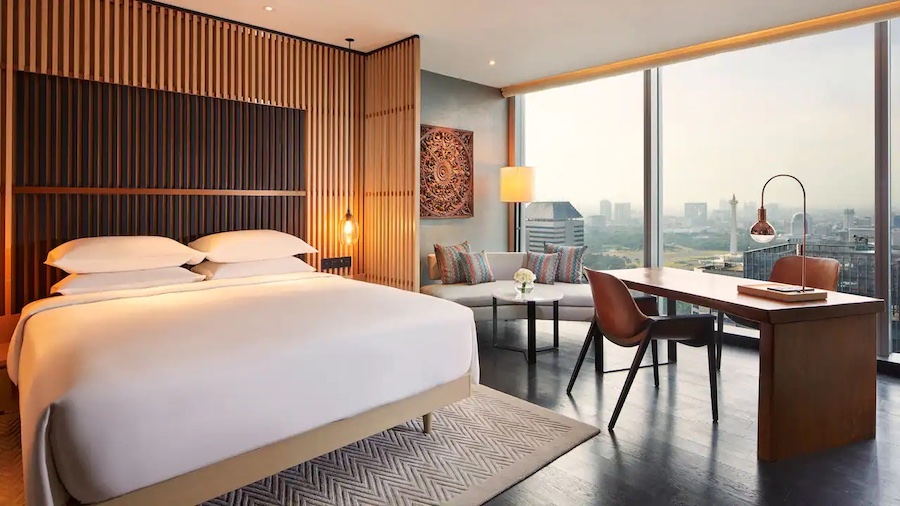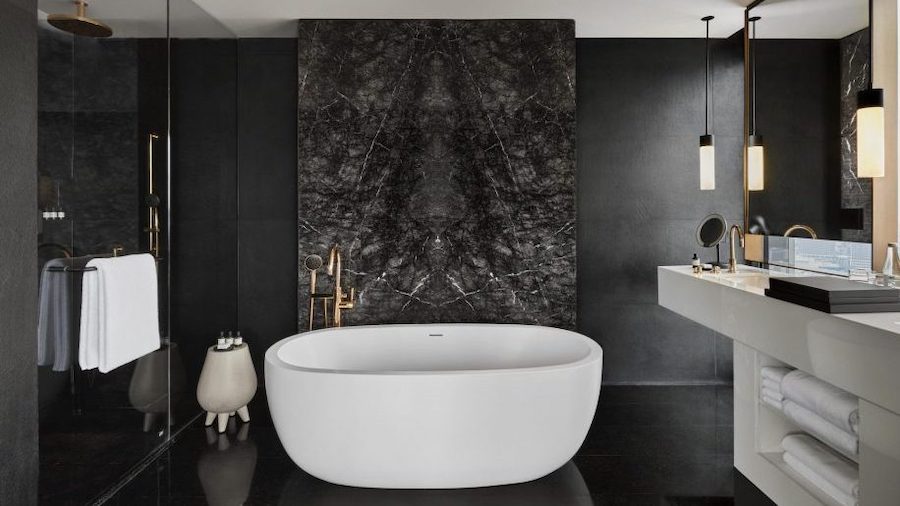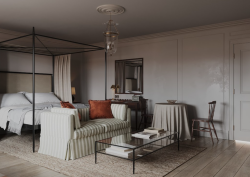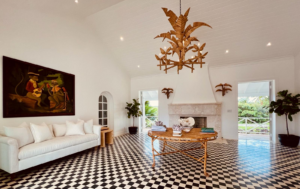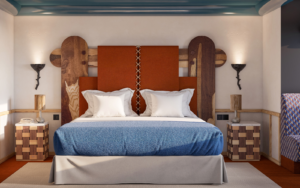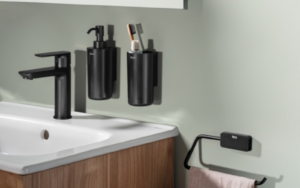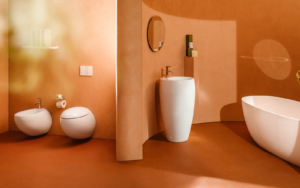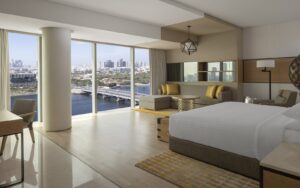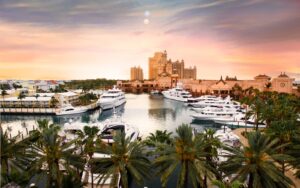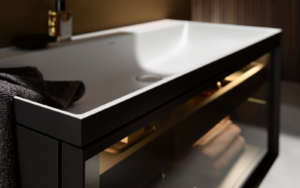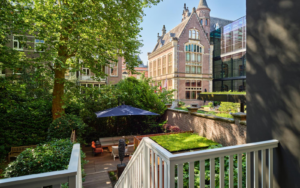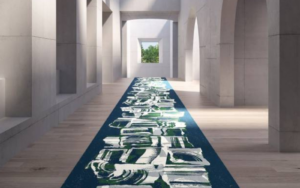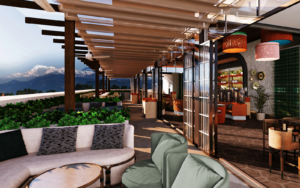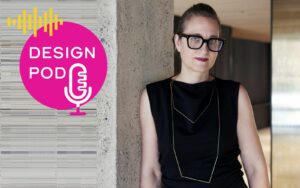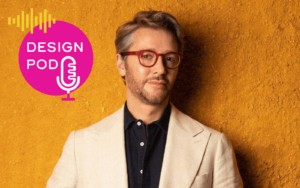In Hotel Designs’ latest roundtable, Editor Hamish Kilburn, in association with Roca and Laufen, invites leading designers to explore the value of variety in hotel bathroom design…
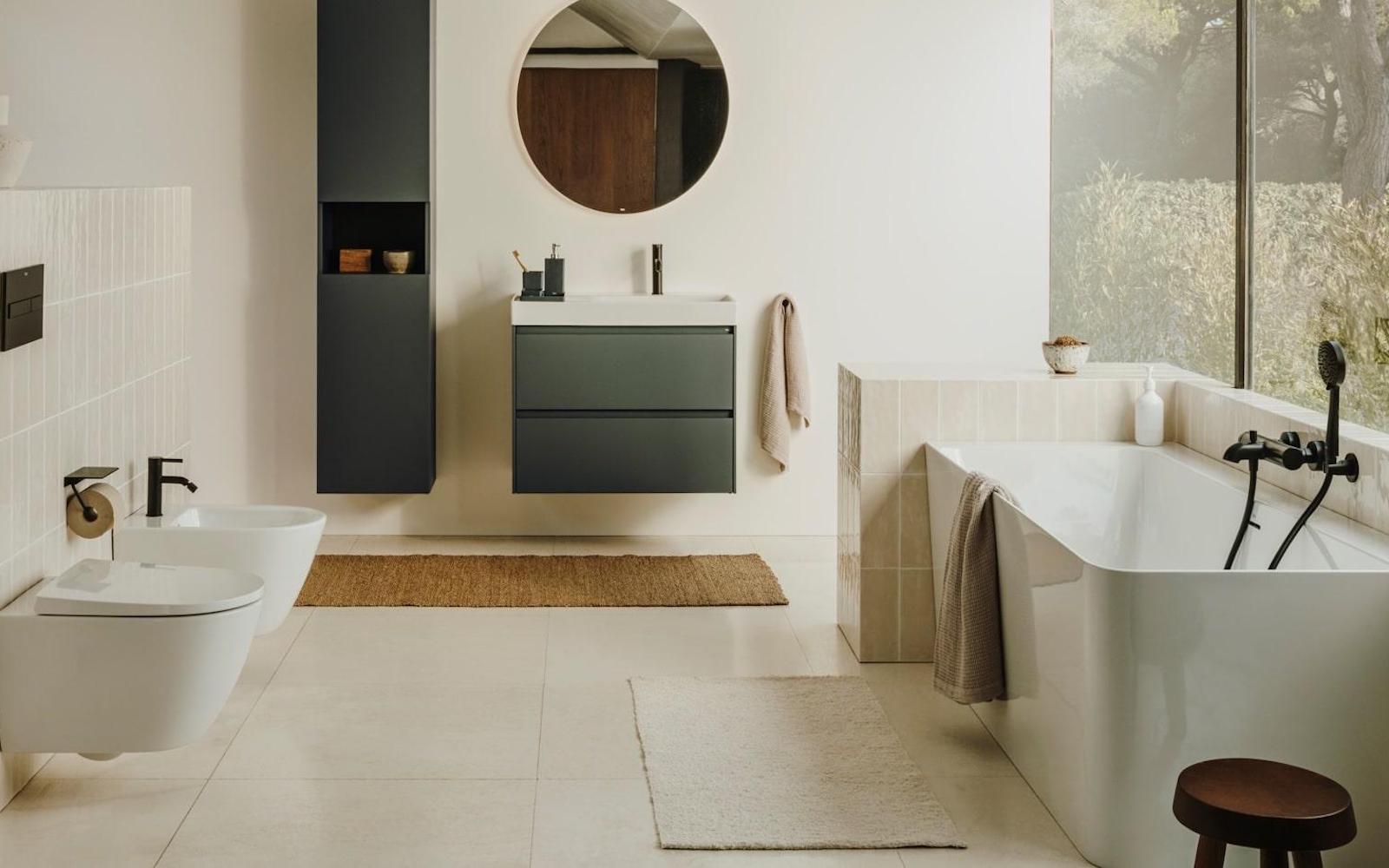
In this year’s series of roundtables, bathroom have been, well, a common theme. From enhancing guest experience, adding personality in heritage bathrooms, technology’s role in tomorrow’s commercial bathroom and exploring texture, colour and materials, our minds have been cracked open that little bit wider to the possibilities of bathroom design. For our penultimate act/roundtable this year, we thought, together with Roca and Laufen, we would further mix things up further by putting the emphasis on variety – and to do so, we hand-selected interior designers who we believe are riding a new wave in hotel bathroom design.
On the panel:
- Dale Atkinson, Founder, Rosendale Design
- Sarah Murphy, Senior Interior Designer, AvroKO
- Tina Norden, Partner, Conran & Partners
- Elena Verdera Pastor, Senior Interior Designer, Studio Moren
- Jon Bond, Head of Projects, Roca and Laufen UK
- Gareth Hare, Senior Specification Manager, Roca and Laufen UK
Despite the practicality use and need of the bathroom having never changed, the design of these now ‘wellness spaces’ have indeed evolved from the earliest surviving bathtub that dates back to 1,700 B.C. and the first flush toilet that was invented in 1596.
Traditionally, consumers associate bathrooms with comfort, hygiene and of course privacy – but given the identifiable shift in perception that we have witnessed recent years, suggesting heavily that these areas in hotels are now being seen beyond practical spaces – and instead, ‘experiences’ of their own – there’s now more variety than ever before. The bathroom door to ‘statement’ has been unlocked to inject creativity in these once empty white boxes. “Restaurants are a great example of how public bathrooms/restrooms have evolved, I would say quite dramatically,” said Dale Atkinson, Founder, Rosendale Design. “Instead of being ‘pushed to the side’, businesses have realised that bathrooms can become a magical places where their brand’s identify and personality can be amplified.”
After identifying restaurants that have elevated the bathroom experience to match or compliment the overall interior design, I was interested to understand when and how hotels started to put more emphasis on bathroom design. “Hotels are slightly different, because you naturally spend more time in them, so they are not transitional like restaurant washrooms” added Tina Norden, Partner, Conran & Partners. “We therefore tend to pull things back slightly. However, the great thing is that today there are more colours to play with that are much more affordable than previously. The other thing I have noticed is that finishes are much better.”
Norden identified an important catalyst – the affordable range of bathroom design products – that the rest of the panel continued to explore. “There are almost endless possibilities, which has enabled us to ensure that the bathroom feels a bit more connected to the overall design concept,” explained Elena Verdera Pastor, Senior Interior Designer, Studio Moren. “There is value in connecting the bathroom with the concept of the hotel. Like all things in commercial interior design, though, we are challenged by the budget, so it then becomes about compromise to ensure that we provide the quality while also staying in line with the client’s expectations.”
When discussing bathrooms and how they have moved on in recent years, one thing that is obvious to see – in colours and materials being used – is the demand for calm spaces. The recently unveiled Ona Collection from Roca is a prime example of this. “When the range was launched, the designers (Noa Design and Benedito Design) talk about Ona (which means ‘wave’ in Catalan) as facilitating the ‘democratisation of design’,” said Jon Bond, Head of Projects, Roca and Laufen UK. “The collection stands out for its versatility in terms of the full bathroom solution, whilst making full use of Roca’s recent innovations in fine ceramic, stonex, Everlux pvd coatings and touchless technology.”
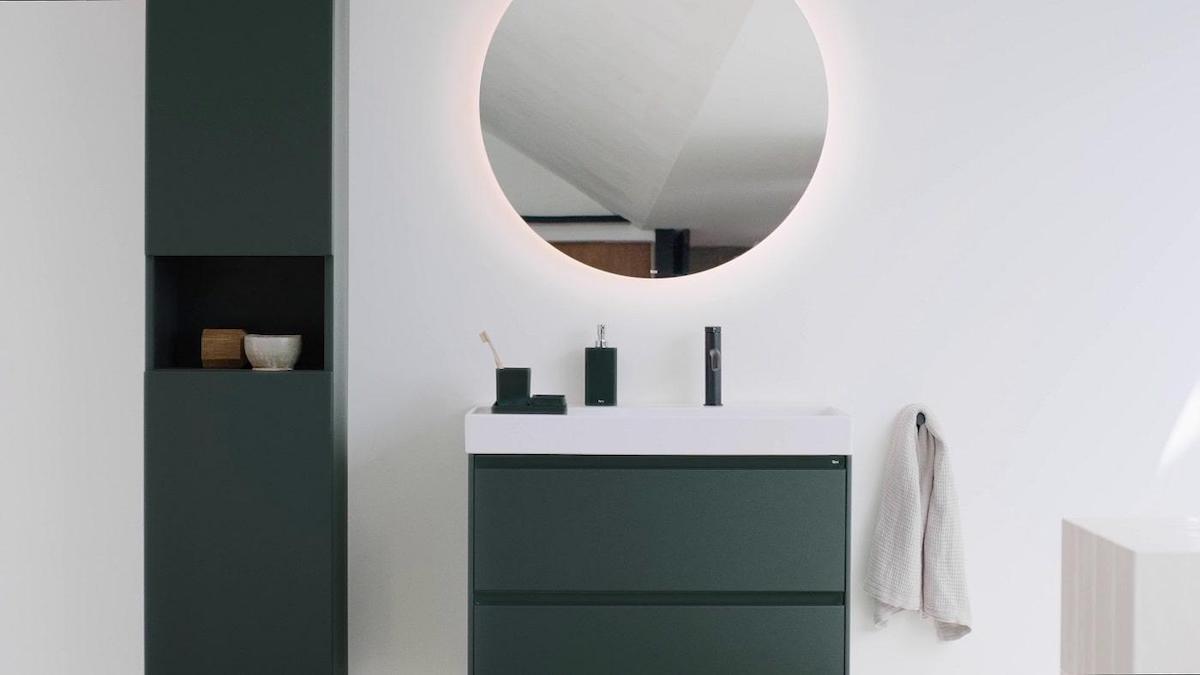
Image credit: Roca
Gareth Hare, Senior Specification Manager, Roca and Laufen, added: “Traditionally, wellness in the bathroom was about just putting in a large shower, whereas now, we have moved towards sustainable wellness – there’s more emphasis on the details when it comes to wellness.”
In a previous roundtable, Nick Hickson, Co-Founder, THDP, shared that he had seen bathrooms cohesively being linked the guestroom, with the vanity unit and basin, for example, being placed outside the parameter of the bathroom. “I was in a hotel bathroom yesterday where this was the case,” said Sarah Murphy, Senior Interior Designer, AvroKO. “It just frees up special issues, and creates a seamless flow. In this case, the space resembled a kitchenette; more like a bar than a bathroom basin.” The Emporium Plovdiv – MGallery is a fine example of this, where the interior designers were met with a challenging room configuration but turned it into the suites’ greatest strengths.
“Brands these days are launching these beautiful products, such as taps with intricate detailing, but the reality is that these are incredible difficult to specify.” – Sarah Murphy, Senior Interior Designer, AvroKO.
Testing this concept, Norden, whose work has always been born out of understanding human behaviour, questioned just how practical these creative ideas are in reality. “Opening up the bathroom is all very well if you are staying on your own, but these spaces, if opened up too much, can sometimes take away not only the privacy but also the level of luxury for guests expecting to close the door to a tranquil space.”

Image credit: Laufen
After setting the tone, the conversation then veered into the lane of luxury, where designers are typically given more space in the bathroom to design and the budget tends to be more generous. For our designers, the definition of ‘luxury’ is creating a space that intuitively compliments travellers’ behaviour. “Like Gareth said earlier, it’s about the details,” added Atkinson. “One element that is often forgotten is that we are not just designing for the end user. We are also designing for the back-of-house staff, and these days a bathroom that is efficiently easy to clean has a lot of value. We have created mock-up rooms, and the client has actually timed the cleaners to see just how practical these spaces are.” Agreeing, the panel discussed anecdotes, including clients requesting rounded-off edges in surface design and putting emphasis on luxury elements such as vanity units.
With cleaning being such a factor in the design of today’s hotel bathrooms, I was interested to understand how trends in detailed texture are being explored in a way that is practical for both traveller and housekeeping. “Brands these days are launching these beautiful products, such as taps with intricate detailing, but the reality is that these are incredible difficult to specify,” explained Murphy. “Yesterday, I tried to specify traditional stone in a restaurant bathroom and it was rejected. And that’s an example of perhaps one client saying ‘yes’ but nine others saying ‘no’. I do think this impacts creativity. However, that’s where colour can really play a role, and it is inspiring to see brands allowing designers to customise the colours of their products. When that service comes from the brand, it’s so much easier to specify because we and the client trust it so much more due to the guarantees.”
When exploring texture, I was keen to understand how far designers would go to use layers to create stylish bathrooms. “To be honest, I think texture plays a larger role in a spa or health club than it does in a hotel bathroom,” added Pastor. “I see huge value in adding texture in corridors and public areas, but it’s so hard to add texture near water because of the cleaning and ware of the product.”
Moving cautiously on, it was interesting to understand how designers have already approached hotel bathroom design in an unconventional manner. For Pastor, who is working on a plethora of projects in London where bathroom space is limited, this is reflected in opening up the bathroom to make the room look and feel larger. Meanwhile, Norden and her team have just completed Park Plaza Jakarta, a project that allowed the team to make the bathroom a sort of protagonist in the overall design scheme. “In a typical room, there are two bathrooms,” she said. “This is a luxury hotel with a lot of space. You have a central entrance with one bathroom on one side, with a vanity and a shower and a bathroom on the other side that features a large vanity and a bath – and separate powder rooms. When you have a room to design of that size (15 square metres) this was an innovative way to connect the whole space.”
The boldest approach to bathroom design, though, came from Murphy, who is currently working on a restaurant project in Barcelona. “The client has requested for there to be an actual DJ playing in the toilets,” she said. “The vanity will essentially become the DJ booth – put simply, the DJ and the experience itself will replace a wallcovering or colour amplifying the brand’s personality. “Although I have never seen anything like that before,” added Norden, “I have noticed a lot more ‘uni sex’ washrooms. Culturally, things are shifting and that is opening up new possibilities for bathrooms to become more open to all.”
A topic that we have explored for some time at Hotel Designs has been sensory design. In addition to the odd DJ, how are designers injecting all senses to create more meaningful and purpose-driven spaces beyond their practical use? “We did a project in Saudi Arabia, and the client was keen to break the mould,” added Pastor. “We were looking at digital technology, such as screens that are ever-changing.” Reflecting Jason Bradbury’s vision when he checked in to a hotel 30 years in the future, the idea of personalised surface design is impressive but also perhaps not in budget in today’s landscape.
“I have been asked to specify products around a certain scent before – Japanese wood burning,” admitted Murphy. “It was so interesting, because it complete changed my approach to designing the bathroom. It was a great client, actually, that had thought about all the details, from the uniform to the soundtrack.” Knowing exactly what the client wanted, the project for Murphy was much more seamless and quicker. “We went in with a layout and design direction, which was instantly approved because everything was in line with their meticulous brief. Everyone in the room, from design to lighting and engineering, knew their role and what they were delivering.”
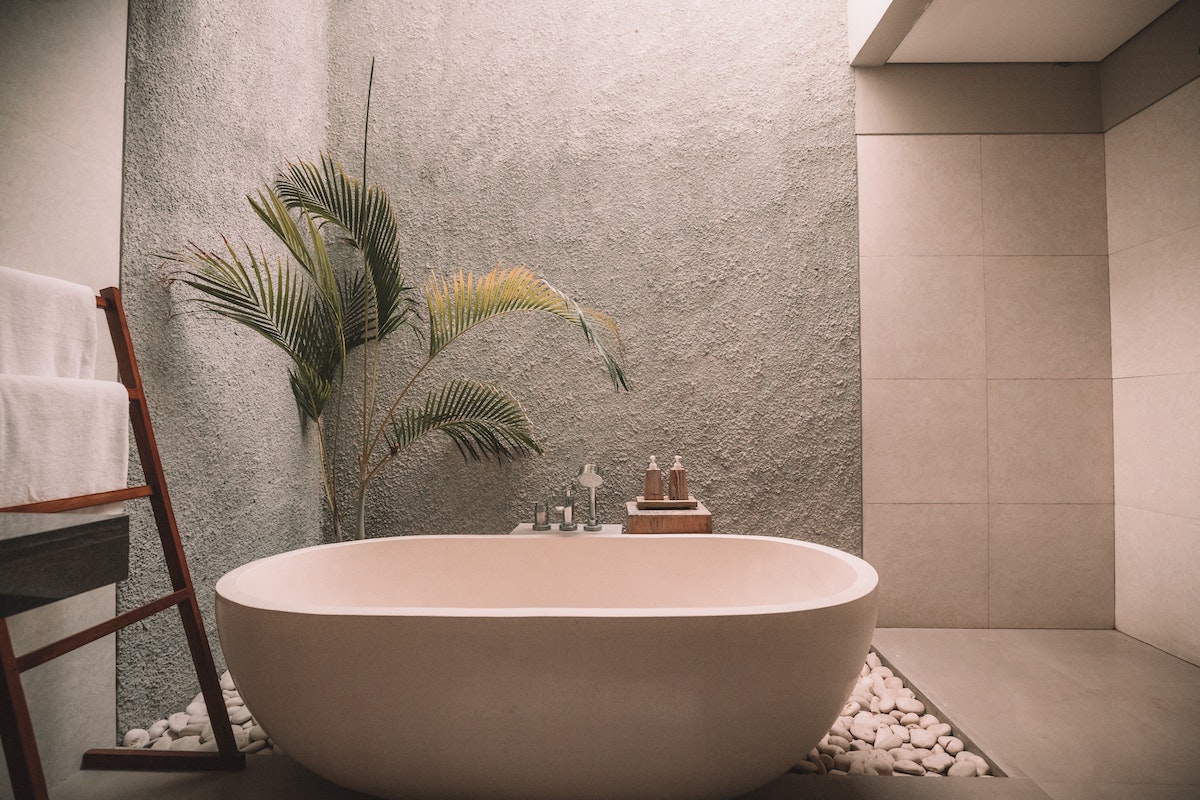
Image credit: Unsplash/Jared Rice
Although there are exceptions, the majority of designers will find it difficult to inject quality sensory design into the bathroom while also being on budget. Norden believes that by changing the narrative somewhat, clients will start to understand the overall value of including these elements. “The other thing that I think clients are really starting to understand is seeing the bathroom as an experience,” she said. “By doing this, we can understand the role of scent, sound and lighting much easier. It may be more expensive, but lighting that can dim, for example, is so much more impactful, especially in the bathroom. An alternative would be to have different light sources that the consumer can switch off.”
Steering the conversation back to product design, the sheer variety on offer has allowed designers to present clients with an abundance of design solutions. Hare explained: “From our side, we take these challenges that designers face and put them into R&D to produce products for other designers who end up facing the same issues. For example, in heritage buildings, designers are limited with W/Cs due to where the cistern is. We now offer a W/C that has an integrated cistern so that it can just fit into the wall.”
There are many conclusions and takeaways to draw from the discussion, but perhaps the loudest argument, amplified by all, was the understanding of human-centric design in the bathrooms of the future. Only then can these mini wellness areas answer to both client demands and traveller expectations – and ultimately push brands and manufacturers, such as Roca and Laufen, to continue to expand the range of materials, colours and products on offer.
Roca and Laufen is one of our Recommended Suppliers and regularly features in our Supplier News section of the website. If you are interested in becoming one of our Recommended Suppliers, please email Katy Phillips.
Main image credit: Roca/Laufen

